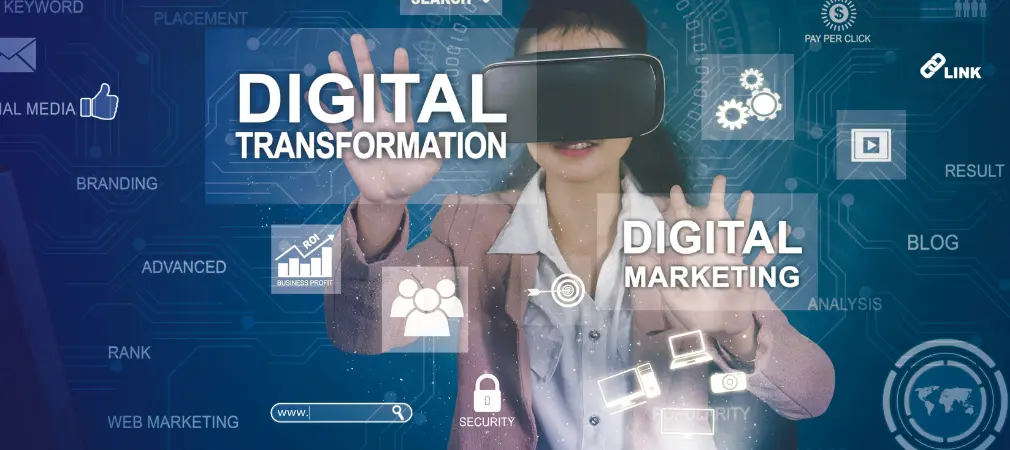The Power of Storytelling in Digital Marketing
Updated on 21th July, 2024
190k views

10 min Read
Introduction
share

In the fast-paced digital world, grabbing and retaining customer attention is a challenge. One effective strategy is storytelling. A compelling story can connect emotionally with the audience, making your brand memorable and engaging. This article explores the power of storytelling in digital marketing and how it can transform your marketing efforts.
Why Storytelling Matters
Emotional Connection: Stories evoke emotions, and emotions drive decisions. By telling a story that resonates with your audience, you create a bond that goes beyond the product or service. For instance, a skincare brand sharing a customer’s journey of overcoming skin issues builds a relatable and emotional connection.
Memorability: People remember stories better than facts or figures. A well-told story can make your brand stand out in the crowded digital space. Think about Apple’s marketing – they don’t just sell tech; they sell the story of innovation and creativity.
Trust Building: Sharing real-life stories or experiences can build trust. Customers are more likely to trust a brand that shows genuine experiences and testimonials. For example, Airbnb uses hosts’ and guests’ stories to highlight trust and community.
Elements of a Good Story
Character: Your story needs a relatable character. This could be your customer, employee, or even the brand itself. A character helps your audience see themselves in the story.
Conflict: Every good story has a conflict or challenge. This element keeps the audience engaged and invested in the outcome. For instance, a fitness brand might tell the story of someone struggling to get in shape before finding their product.
Resolution: The story should have a satisfying conclusion where the conflict is resolved. This often involves your product or service providing the solution. It shows how your brand can positively impact your customers’ lives.
Message: A strong story conveys a clear message or value. What do you want your audience to take away? It could be the quality of your product, your brand values, or a call to action.
How to Incorporate Storytelling in Digital Marketing
Social Media: Platforms like Instagram, Facebook, and Twitter are perfect for sharing stories. Use posts, videos, and live sessions to tell your brand story. User-generated content, such as customer reviews and testimonials, can also be powerful.
Content Marketing: Blogs, articles, and videos allow for more detailed storytelling. Share behind-the-scenes looks at your company, success stories, or educational content that tells a story while providing value.
Email Marketing: Use emails to share stories about new products, customer experiences, or company milestones. A well-crafted story in an email can increase open and click-through rates.
Website: Your website should tell your brand story from the homepage to the about page. Use visuals, videos, and text to create a cohesive narrative that visitors can follow.
Advertising: Ads with a storytelling element are more engaging and effective. Instead of just listing features, show how your product or service fits into a larger story. For example, a travel company might create ads that tell the story of a family’s adventure.
Examples of Successful Storytelling
Businesses now have the amazing chance to communicate with their Nike: Nike’s “Just Do It” campaign is a classic example of storytelling in marketing. The brand shares stories of athletes overcoming obstacles, which resonates with their audience and reinforces the brand’s message of perseverance and achievement.
Dove: Dove’s “Real Beauty” campaign focuses on real women and their stories, challenging traditional beauty standards. This approach has built a strong emotional connection with their audience and reinforced Dove’s brand values.
GoPro: GoPro uses user-generated content to tell exciting and adventurous stories. By showcasing videos made by their customers, they highlight the versatility and quality of their cameras while creating a community of engaged users.
Benefits of Storytelling in Digital Marketing
Enhanced Engagement: Stories capture attention and keep the audience engaged. People are more likely to watch a video, read a post, or click on an ad that tells an interesting story.
Increased Conversion Rates: Emotional connections lead to higher conversion rates. When customers feel connected to your brand, they are more likely to make a purchase or engage with your content.
Brand Loyalty: Consistent storytelling can build brand loyalty. Customers who relate to your stories and values are more likely to stick with your brand over time.
Differentiation: In a competitive market, storytelling sets you apart. A unique brand story makes you memorable and different from competitors who only focus on product features.
Tips for Effective Storytelling
Know Your Audience: Understand your audience and what stories will resonate with them. Tailor your storytelling to their interests, values, and needs.
Be Authentic: Authenticity is crucial. Don’t exaggerate or fabricate stories. Real, honest stories build trust and credibility.
Use Visuals: Visual elements like photos, videos, and infographics enhance storytelling. They make the story more engaging and easier to understand.
Keep It Simple: A good story doesn’t have to be complicated. Focus on a clear, simple narrative that conveys your message effectively.
Incorporate Your Brand: Make sure your brand is an integral part of the story. The story should highlight your brand’s values, mission, and benefits without feeling like a hard sell.
Integrating Storytelling Across Different Channels
Video Marketing: Videos are one of the most effective ways to tell a story. Platforms like YouTube, TikTok, and Instagram Stories are ideal for short, engaging videos. A behind-the-scenes look at your company, customer testimonials, or a day in the life of an employee can be powerful video content.
Podcasting: Podcasts allow for deeper storytelling. Interviews with customers, experts, or employees can provide rich, engaging content. A podcast series on industry trends or company history can also build a loyal audience.
Interactive Content: Use interactive content like quizzes, polls, and interactive infographics to engage your audience. For example, a quiz that tells a personalized story based on the answers can be a fun and memorable experience.
Live Streaming: Live streaming on platforms like Facebook Live, Instagram Live, or Twitch allows you to interact with your audience in real-time. Live Q&A sessions, product launches, or virtual tours can be engaging ways to tell your story.
User-Generated Content: Encourage your customers to share their stories. User-generated content not only provides authentic stories but also builds a community around your brand. Share these stories on your social media, website, and other marketing channels.
Conclusion
In conclusion, digital marketing has established itself as a critical component of modern corporate operations. It has the ability to engage a large audience, create personalised experiences, maximise cost-effectiveness, and offer real-time data insights. Digital marketing will continue to influence how businesses and consumers engage as technology develops. Organisations seeking to expand and succeed in the digital environment of today must now adopt digital marketing tactics.
With LEJHRO's Digital Marketing Bootcamp, you will learn all the specific strategies for using digital marketing end-to-end and you'll broaden your skills suitable to flaunt your career in the field. Sign up today to learn more!Bootcamps
Bestseller
Digital Marketing Course
Start Date :Aug 09, 2025
Duration :4 Months
Bestseller
Data Analyst Course
Start Date :Aug 09, 2025
Duration :4 Months
Suggested Blogs
What is online reputation management
Updated on 21th July, 2024

190k views

10 min Read
The Growing Role of Marketing Chatbots and AI in Modern Digital Marketing
Updated on 21th July, 2024

190k views

10 min Read
Master SERP Analysis for Superior SEO Results
Updated on 21th July, 2024

190k views

10 min Read
More Blogs
© 2025 LEJHRO. All Rights Reserved.






